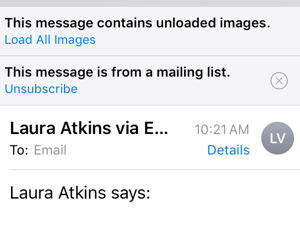Naming Names
One of the things that regularly happens at email conferences is a bunch of representatives from various ISPs and sometimes deliverability companies get up on stage and entertain questions from the audience about how to get email to the inbox. I’ve sat in many of these sessions – on both sides of the stage. The questions are completely predictable.
Almost invariably, someone asks if they can quote the ISP representative, because there is this belief that if you connect a statement with an employee name that will give the statement more weight. Except it doesn’t really. People who aren’t going to listen to the advice won’t listen to it even if there are names attached.
A lot of what I publish here is based on things the ISP reps have said. In some cases the reps actually review and comment on the post before I publish it. I don’t really believe attaching names to these posts will make them any more accurate. In fact, it will decrease the amount of information I can share and will increase the amount of time it takes to get posts out.
Last night I was joking with some folks that I should just make up names for attribution. Al did that many years ago, coining the pseudonym Barry for ISP reps. Even better, many of the ISP employees adopted Barry personas and used them to participate in different online spaces. Barry A. says X. Barry B. says Y. Barry C. says W. Barry D.
It doesn’t matter what names I attach.
I think I’m going to start adding this disclaimer to the appropriate blog posts:
Any resemblance to persons living or dead should be plainly apparent to them and those that know them. All events described herein actually happened, though on occasion the author has taken certain, very small, liberties with narrative.
Because, really.
